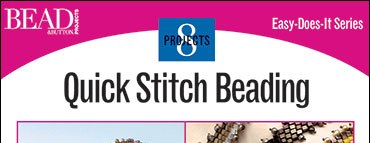On May 4, Western District Judge Ricardo Martinez granted defendant Kalmbach Publishing Co.’s motion for partial summary judgment dismissing plaintiff Rubber Stamp Management Inc.’s federal trademark claims. The Browns Point, Wash.-based craft supplier and seller of decorative rubber stamps had alleged that the defendant publisher gives consumers a false impression about the origin of its craft-making booklets by using a purple arch design that is similar to the “purple arch mark” plaintiff uses on its Web site.
Plaintiff’s mark (depicted below) appears on its Web site along with the registered logo, “Addicted to Rubber Stamps,” and a cartoon image of a woman jumping enthusiastically with a rubber stamp held in each hand, placed in the center of the arch. Only the purple in these marks was at issue in the case. Plaintiff has used its marks since 2001.

Defendant’s design appears on the cover of its Easy-Does-It Series booklets (the top portion of which is depicted below) as an arch that may be one of many different colors, including purple. Defendant chooses the color for its arch and background to complement the subject of its booklet. It has used its arch design since August 2002.

In January 2006, Plaintiff filed a trademark application “consist[ing] of the color ‘purple’ used on mailing labels, websites, logos, letterhead, and printed promotional or advertising materials and digital facsimiles thereof.” In July 2006, the U.S. Patent and Trademark Office refused to register the mark. In the instant motion, defendant moved for summary judgment on the ground that plaintiff does not have a protected or protectable trademark in the color purple used in the arch and, therefore, no claim for false designation of origin, false representation, false advertising, or trademark dilution.
The court recognized that a color mark is not inherently distinctive, but can become distinctive over time if consumers treat the particular color as signifying a particular brand. Therefore, the court focused on plaintiff’s proof of secondary meaning. Plaintiff argued that secondary meaning presents a question of fact and urged the court to deny summary judgment to allow the plaintiff to present the issue to the jury.
The court disagreed. It found “plaintiff must first put forth evidence which would create a triable issue of fact as to the question of secondary meaning. While plaintiff has presented evidence of its advertising campaign and expenditures, nowhere is there any evidence of the consumers’ actual association of the purple arch with [plaintiff’s] product, or even of an effort to direct the consumer to make that association by saying, ‘look for the purple arch.’ Thus, no matter how favorable the light in which the Court views plaintiff’s advertising evidence, no triable issue of fact on the question of secondary meaning can be found because plaintiff’s evidence on a crucial element is lacking.”
Based on this finding, the court concluded “[w]ithout secondary meaning, the mark lacks distinctiveness required for protection under § 43 of the Lanham Act, 15 U.S.C. § 1125(a). In the absence of distinctiveness of the mark, it cannot ‘cause confusion’ as to the origin of the goods as required by statute.”
The court dismissed plaintiff’s dilution claim without further comment.
The case cite is Rubber Stamp Management, Inc., v. Kalmbach Publishing Co., No 06-0277, 2007 WL 1367718 (W.D. Wash.).